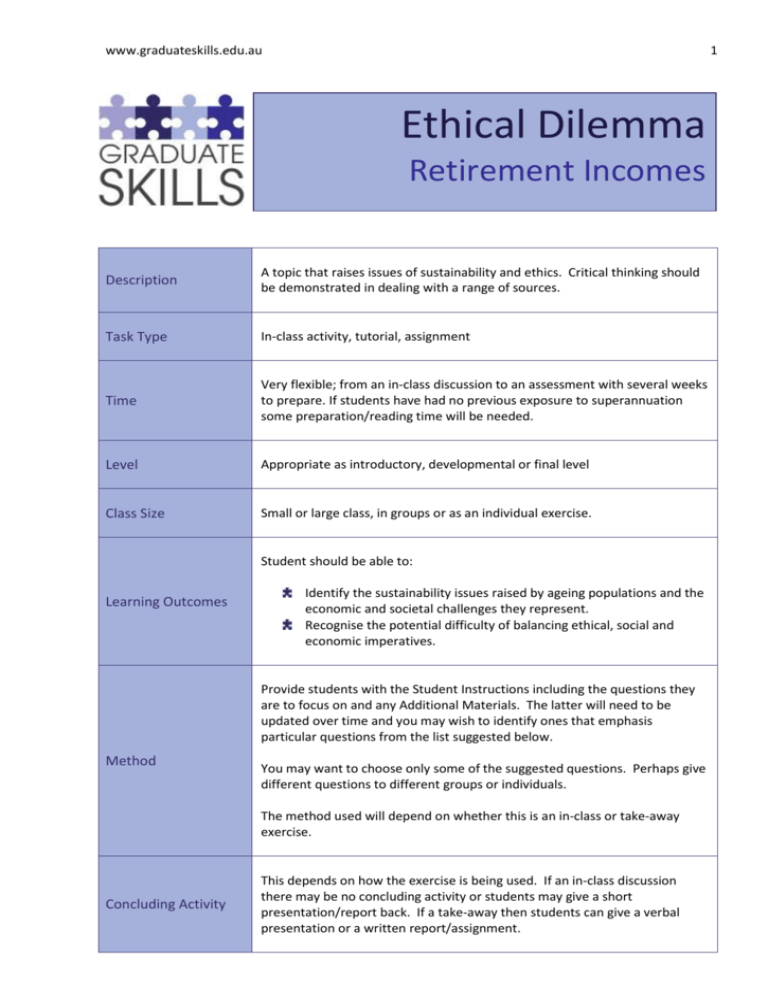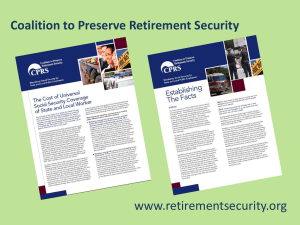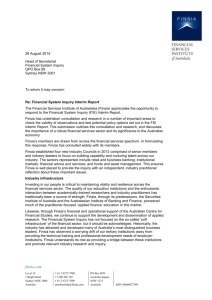word - Graduate Skills
advertisement

www.graduateskills.edu.au 1 Ethical Dilemma Retirement Incomes Description A topic that raises issues of sustainability and ethics. Critical thinking should be demonstrated in dealing with a range of sources. Task Type In-class activity, tutorial, assignment Time Very flexible; from an in-class discussion to an assessment with several weeks to prepare. If students have had no previous exposure to superannuation some preparation/reading time will be needed. Level Appropriate as introductory, developmental or final level Class Size Small or large class, in groups or as an individual exercise. Student should be able to: Learning Outcomes Identify the sustainability issues raised by ageing populations and the economic and societal challenges they represent. Recognise the potential difficulty of balancing ethical, social and economic imperatives. Provide students with the Student Instructions including the questions they are to focus on and any Additional Materials. The latter will need to be updated over time and you may wish to identify ones that emphasis particular questions from the list suggested below. Method You may want to choose only some of the suggested questions. Perhaps give different questions to different groups or individuals. The method used will depend on whether this is an in-class or take-away exercise. Concluding Activity This depends on how the exercise is being used. If an in-class discussion there may be no concluding activity or students may give a short presentation/report back. If a take-away then students can give a verbal presentation or a written report/assignment. www.graduateskills.edu.au 2 Assessment Could be used for an assessable presentation and/or a written essay/report. Tips Strongly suggest choosing from among the possible questions before providing materials to students to give them a clear focus. Support for this resource has been provided by the Australian Learning and Teaching Council Ltd, an initiative of the Australian Government Department of Education, Employment and Workplace Relations. The views expressed in this (report/publication/activity) do not necessarily reflect the views of the Australian Learning and Teaching Council. www.graduateskills.edu.au Summary of Scenario Context The vast majority of developed countries are experiencing an ageing of their population. This results from the ‘double whammy’ of falling birth rates and increasing life expectancy. Thus it is likely that an increasing proportion of the population will have retired from the full-time workforce. This has significant economic implications. Those who are retired usually pay little or no tax but are significant consumers of government services; in particular health and the age pension. The main source of money for government services is taxation; if the proportion of taxpayers is declining but the use of services is increasing how government is to ‘balance the books’? There are many answers to this question and one of them is to try and limit the demand for services. The Australian government has sought to do this in the area of retirement incomes by reducing peoples’ dependence on the age pension. This exercise asks you to consider some of the ethical and sustainability issues raised by Australia’s current retirement incomes system. Additional Information We generally refer to three pillars of retirement income provision: First pillar, safety net: government provided pension Second pillar, compulsory employment related: referred to in Australia as compulsory superannuation Third pillar, voluntary savings: in Australia may be voluntary contributions to superannuation or any other saving for retirement. Australia has been a world leader in: Reducing access to the first pillar by means testing. Building a strong second pillar. Almost all the Australian working population now has an amount equivalent to 9% of their income paid to a superannuation fund by their employer. Providing generous tax concessions to encourage the third pillar if savings are put into a superannuation fund. In 1909 Australia introduced the age pension to be paid to those not working and aged over 65. At that time the average life expectancy was 55; it is now over 80. A recent government decision to raise eligibility for the age pension from 65 to 67 drew strong protests. Australians used to be able to access their superannuation at age 55, this is gradually being increased to 60. It was recently suggested that the age you can access superannuation should be the same as the eligibility age for the age pension. Among OECD countries Australia is considered to have one of the most economically robust approaches to retirement incomes and to be well prepared to cope with this aspect of an ageing population. 3 www.graduateskills.edu.au One of the criticisms of Australia’s approach to the second pillar is the frequency with which the rules change making it difficult for people to understand the system or plan ahead. Another is that tax concessions favour the wealthy who pay more tax and can afford to contribute more to superannuation. The biggest hit, in terms of numbers, to the ageing population will be the baby boomers, those born between 1945 and 1965 that are currently nearing retirement. There are two significant challenges for them in Australia’s approach to the three pillars; for most of their working lives: The second pillar did not exist. They believed that if you worked and paid your taxes the government would look after you in old age. The aim of additional materials should be to present students with differing points of view on particular questions. Retirement incomes policy is extremely dynamic (this is one of the problems!) so materials and issues are constantly changing. Also appropriate materials will depend very much on the level and discipline focus of the class. Attached is a ‘discussion starter’ exercise that could be conducted in class to get students thinking about the topic. Stimulus Material Millions of words have been written and spoken about this issue in recent years; a Google search on “retirement income” produces around 225,000 hits in Australia and almost 23 million globally! Explore widely but, as always, be aware of the context of the information you find. The Australian Securities and Investment Commission’s Fido website [Link] has up-to-date information about Australia’s superannuation system. Other government websites [Link] provide more general information. The Parliamentary Library has a useful chronology of events [Link]. 4 www.graduateskills.edu.au Questions You might like to consider some of these questions as a starting point for your investigation. How should the three pillars of a retirement income system be balanced? Should people be expected to save for their retirement or should the government provide them with an income? If the government provides an income how should this be funded? Should those still working be taxed more? Should taxes on goods and services be increased? Should there be tax concessions to encourage you to save for retirement? If so how can this be equitable to all income groups? At what age should people be eligible for a government provided age pension? Should this be linked to life expectancy? Should access to superannuation be at the same age or earlier? How can people be encouraged to save for retirement, particularly early in their working lives? Should you be able to access your superannuation for ‘other things’ (eg the deposit when buying your first home)? Australian superannuation funds have over $300 billion in assets. How should these funds be invested? Should the government have any role in directing those investments? 5











